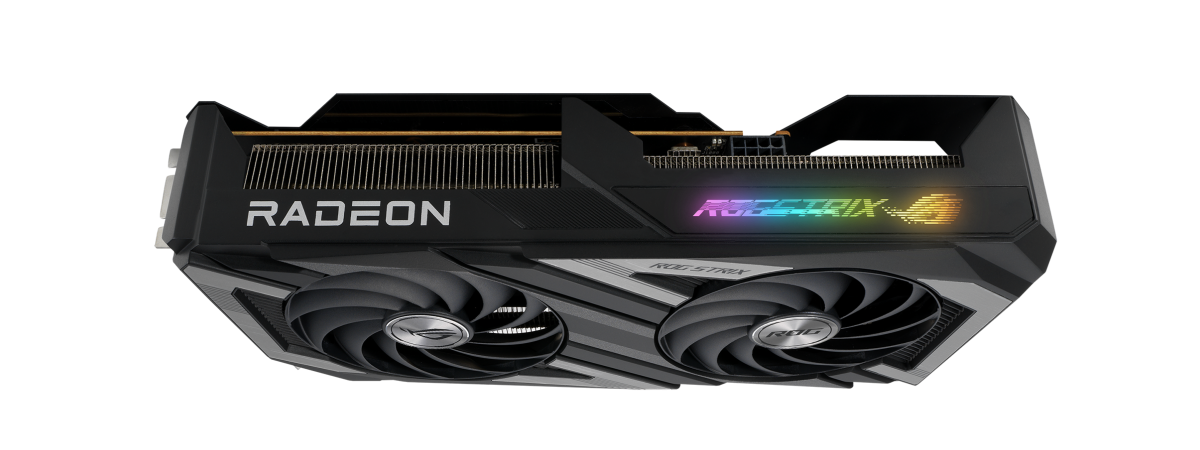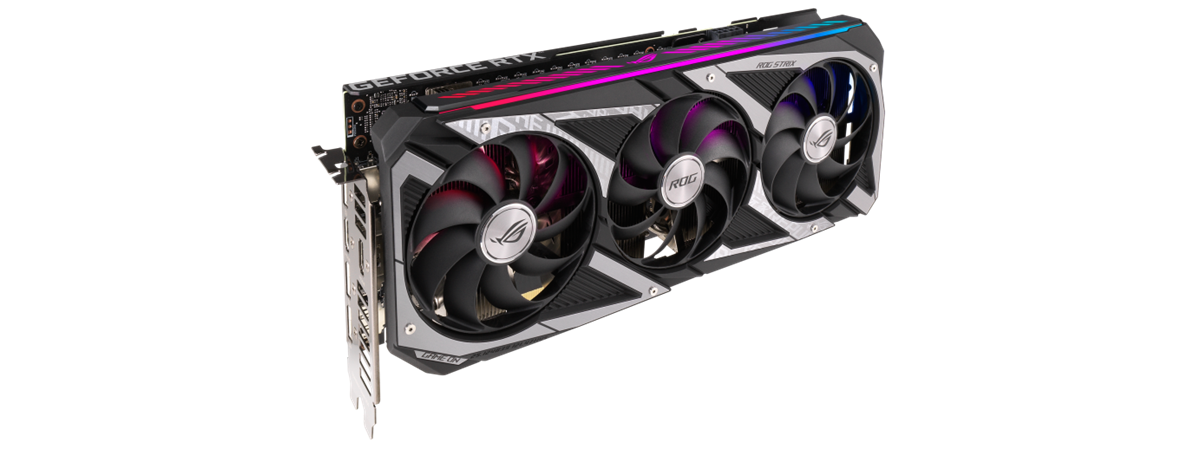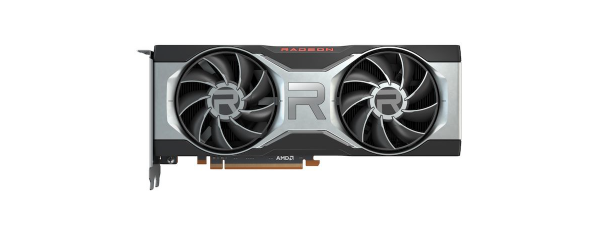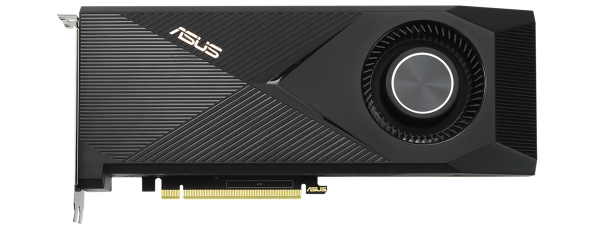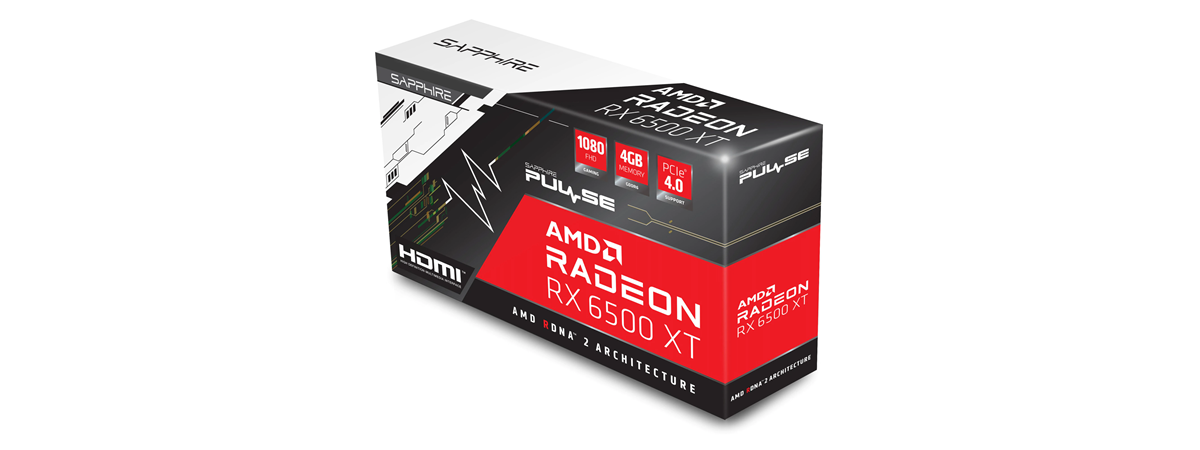
The Radeon RX 6500 XT is an entry-level gaming graphics card that AMD tried to make as unappealing to crypto miners as possible. However, this meant skipping some of the details that make good graphics cards good! For example, the Radeon RX 6500 XT is limited to 4 PCIe lanes, and it’s equipped with just 4GB of RAM. On the other hand, that RAM is fast, and the card’s price is affordable compared to what the GPU market looks like right now. So is it worth buying one? In today’s review, we’re taking a look at the Sapphire Pulse AMD Radeon RX 6500 XT. Read on to see what it can do:
Sapphire Pulse AMD Radeon RX 6500 XT: Who is it good for?
The Sapphire Pulse AMD Radeon RX 6500 XT is an excellent choice for those who:
- Want an affordable graphics card
- Are OK with playing games in 1080p and mid-to-high visuals
- Own a computer with a PCI Express 4 motherboard
Pros and cons
There are some positives about the Sapphire Pulse AMD Radeon RX 6500 XT graphics card:
- It’s affordable in comparison to other graphics cards
- The performance it offers is sufficient in 1080p resolution
- AMD FidelityFX Super Resolution significantly boosts fps in supported games
- The cooling system is silent and manages to keep temperatures in check
- Its power requirements are low
There are several disadvantages, too:
- 4GB of RAM is low for today’s standards
- Only one DisplayPort and one HDMI port
- Running on just 4 PCIe lanes, you’ll probably get meager performance on PCIe 3.0 motherboards
- Ray-tracing performance is poor (only 16 accelerators)
Verdict
The Sapphire Pulse AMD Radeon RX 6500 XT graphics card can represent a good choice for you with a couple of conditions. You’ll have to either not be into gaming, or be OK with playing games in 1080p on medium to high graphics settings at most. And you’ll also need to already have a motherboard that supports PCI Express 4.0 at least. Otherwise, this video card’s performance will be severely limited. If you meet these basic requirements and don’t want to spend a lot on your next graphics card, then yes, you could try the Sapphire Pulse AMD Radeon RX 6500 XT.
Unboxing the Sapphire Pulse AMD Radeon RX 6500 XT
The Sapphire Pulse AMD Radeon RX 6500 XT is not a very large graphics card, and its package is accordingly small. The box showcases the brand and name of the GPU, as well as some of its main features, technical specs, and minimum system requirements. Unfortunately, there are no pictures of the video card anywhere.
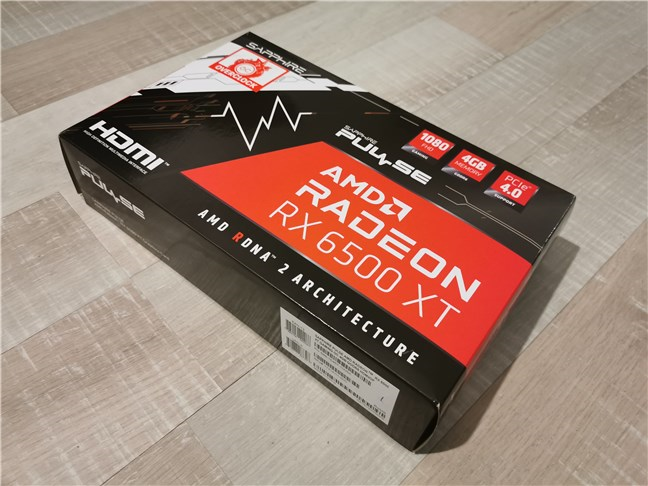
The packaging of the Sapphire AMD Radeon RX 6500 XT
Inside the package, you’ll find the Sapphire Pulse AMD Radeon RX 6500 XT graphics card, accompanied by its user manual and warranty documents.
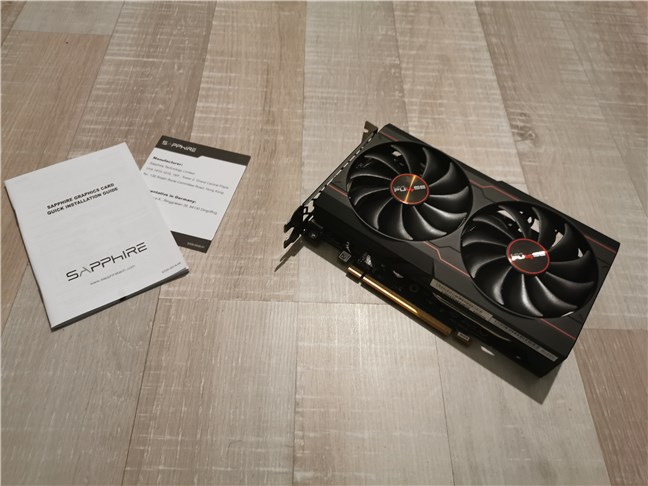
What's inside the box of the Sapphire AMD Radeon RX 6500 XT
The unboxing experience you get from the Sapphire Pulse AMD Radeon RX 6500 XT graphics card is straightforward. You only get the bare essentials, as expected from a budget device.
Design and hardware specifications
The graphics card is protected by a metallic plate on its back, with a nice design. It features the Sapphire Pulse brand and logo, as well as AMD’s Radeon printed in red, thick font characters. Besides aesthetics, the backplate also has a more important goal: to help dissipate heat.
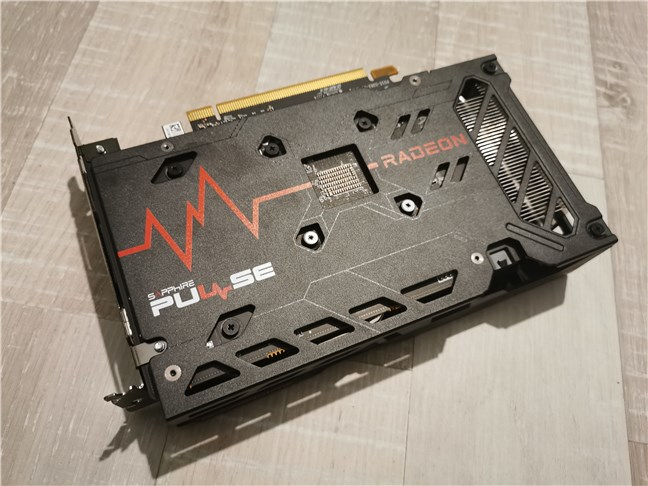
The metal backplate of the Sapphire Pulse AMD Radeon RX 6500 XT
Compared to AMD’s reference Radeon RX 6500 XT, Sapphire’s graphics card comes with a better cooling system. Instead of just one cooler, the Sapphire Pulse AMD Radeon RX 6500 XT has two. Thus, it should be able to achieve lower temperatures than the stock RX 6500 XT. Furthermore, it should be noticeably quieter, as the two fans can provide equivalent airflow while spinning at lower speeds.
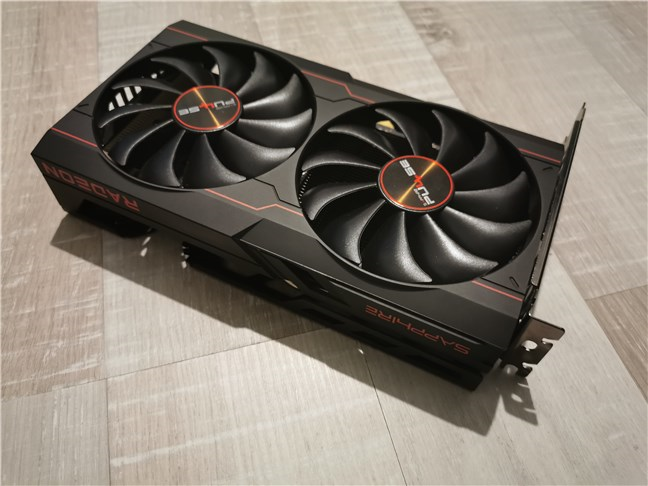
The fans on the Sapphire Pulse AMD Radeon RX 6500 XT
The Sapphire Pulse AMD Radeon RX 6500 XT doesn’t have RGB lighting, but we won’t hold that against it. After all, we’re talking about a budget graphics card. Speaking of which, AMD recommends a retail price of about 200 USD. Obviously, in present market conditions, that’s a dream. Still, compared to what other graphics cards cost, the Sapphire Pulse AMD Radeon RX 6500 XT is an affordable choice - for example, on Newegg and Amazon, you can get it for about 310 - 320 USD.
As we briefly mentioned at the beginning of this review, the Sapphire Pulse AMD Radeon RX 6500 XT is a relatively small graphics card. Measuring 10.5 x 6.5 x 2.5 inches (26.67 x 16.51 x 6.35 cm), its length won’t be a problem even in smaller computer cases, but it still occupies two PCIe slots.
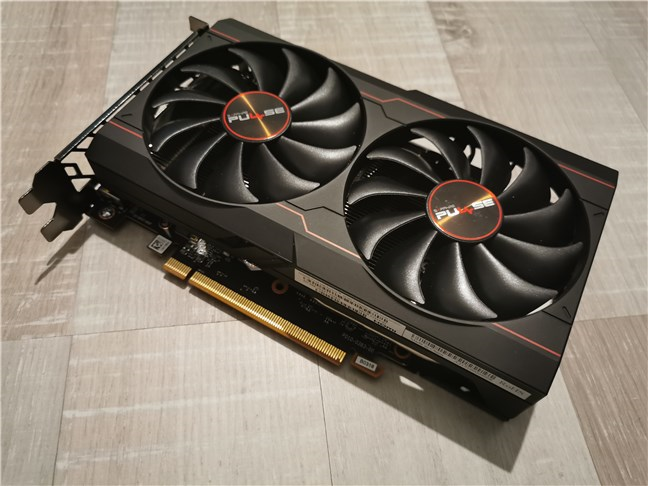
A look at the Sapphire Pulse AMD Radeon RX 6500 XT
The technical specs of the Sapphire Pulse AMD Radeon RX 6500 XT are the same as those of the reference AMD Radeon RX 6500 XT. It’s built using AMD’s RDNA 2 GPU architecture, on TSMC’s 6-nanometer manufacturing process. The card’s default game clock measures an impressive 2.6GHz, while the boost clock can reach 2.8GHz. Furthermore, compared to the previous generation of AMD GPUs, the RX 6500 XT also comes with ray accelerators, so hardware ray-tracing is possible. Unfortunately, you only get 16 such accelerators, which is nowhere near the amount required for even average ray-tracing performance. You’ll probably get away with enabling a few less-demanding ray-tracing options in your favorite games, but that’s all.
On the other hand, the RX 6500 XT graphics card can use AMD’s FidelityFX Super Resolution, a feature that can improve performance significantly in supported games. It works by rendering frames at lower than set resolution in games and upscaling them in real-time. While somewhat similar to Nvidia’s DLSS (Deep Learning SuperSampling) technology, it’s easier to implement by developers, so we should see the number of games that can use it increase exponentially during the next couple of months. For now, there aren’t so many games that can take advantage of FidelityFX Super Resolution, but some of the best titles out there already do. Here’s the updated list on AMD’s website: Games that support AMD FidelityFX Super Resolution.
Next comes the sad part of the story, as AMD’s Radeon RX 6500 XT has a couple of significant drawbacks. First of all, the amount of graphics memory on it is far from what you’d expect in 2022 from a gaming desktop GPU: just 4GB of GDDR6, albeit running at a high speed of 18Gbps. The only good thing about that is that it shouldn’t be an attractive option for crypto miners, so it should be easier to procure by the rest of us, gamers and regular users.
The second big drawback of the Radeon RX 6500 XT is that it uses a narrow memory bus, limited to 128-bit. And, if that wasn’t enough, it only has 4 PCIe lanes, which is undesirable for a gaming graphics card. Usually, such GPUs use 16 PCIe lanes, and only some of the very budget-oriented ones are limited to 8 PCIe lanes. Four lanes are barely enough on a motherboard that uses PCI Express Generation 4.0, and it’s severely restricting if you mount this graphics card on a motherboard that supports only PCI Express 3.0.
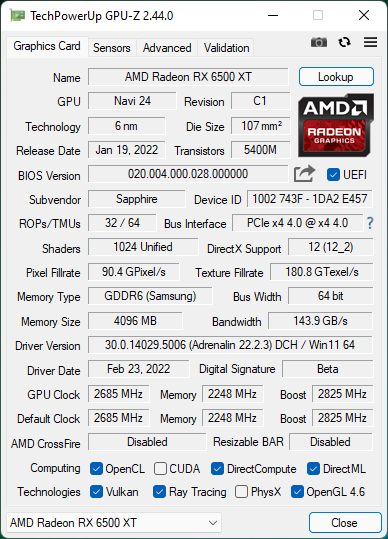
Specifications shown by GPU-Z
To cut costs further, AMD Radeon RX 6500 XT graphics cards offer only two display ports: a DisplayPort 1.4a and an HDMI 2.1 port. The maximum resolution you can get from it is 7680 x 4320 pixels.
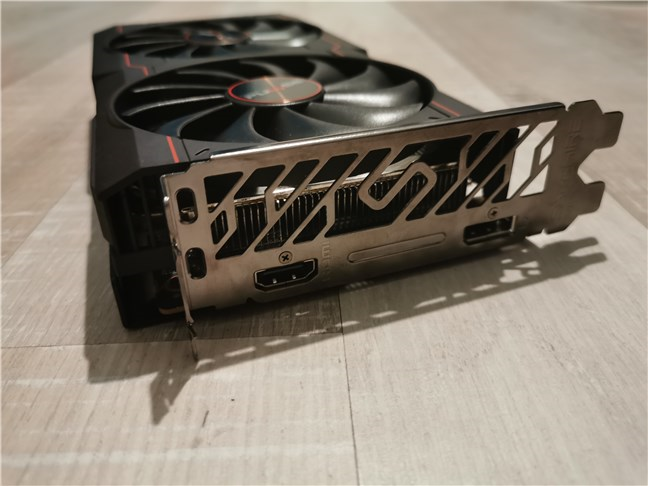
The display outputs on the Sapphire Pulse AMD Radeon RX 6500 XT
Last but not least, before we end this section of the review, a piece of good news: AMD’s Radeon RX 6500 XT doesn’t require lots of electrical power. Theoretically, it will not consume more than 107 Watts, and a 400W power supply unit should suffice.
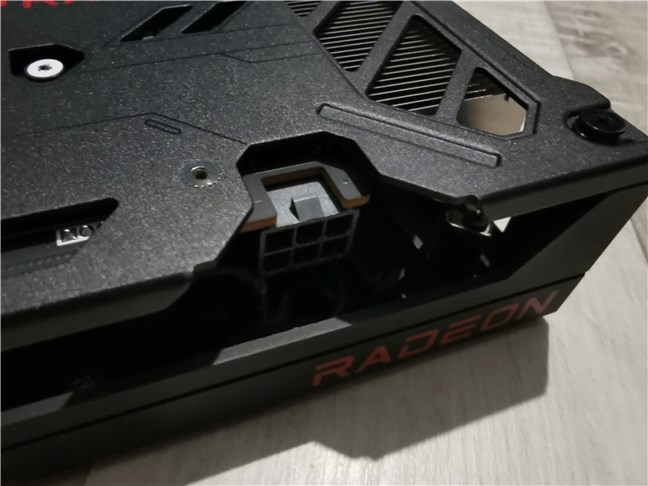
The Sapphire Pulse AMD Radeon RX 6500 XT draws power via a 6-pin connector
The Sapphire Pulse AMD Radeon RX 6500 XT is a graphics card that looks nice and interesting. But its hardware specs are modest, to say the least. While it may offer decent gaming performance in 1080p resolutions, it will probably be able to do so only if you pair it with a motherboard that supports PCI Express 4.0. On PCIe 3.0, its performance will be severely limited.
Sapphire Pulse AMD Radeon RX 6500 XT - Testing setup
To check the performance offered by Sapphire Pulse AMD Radeon RX 6500 XT graphics card, we ran a few benchmarks with it, and we compared its results with another Radeon RX 6500 XT model: the ASUS TUF Gaming Radeon RX 6500 XT OC Edition. We also decided to use only medium visual settings in the tested games, as that’s what the modest hardware on this GPU is targeting: mid to high visuals. Furthermore, we also reran the benchmarks using AMD FidelityFX Super Resolution, as this upscaling feature can improve performance significantly in supported games.
Before we go ahead to show you what results we got, here’s the hardware and software that we used for benchmarking:
- Processor: Intel Core i5-12600K
- Motherboard: ASUS ROG STRIX B660-F GAMING WIFI
- Memory: ADATA XPG Lancer DDR5 RAM (2 x 16GB, 5200MHz)
- Storage: ADATA Legend 840 PCIe Gen4 X4 M.2 2280 Solid State Drive
- Power Supply Unit: ASUS ROG Thor 850W Platinum
- Operating System: Windows 11 Pro Version 21H2 Build 22000.527
Sapphire Pulse AMD Radeon RX 6500 XT - Benchmarks results
We began the tests with Far Cry 6, one of the best-looking games today, but also one of the most demanding ones in terms of hardware performance. The numbers were almost identical between the two graphics cards, and AMD’s FSR (FidelityFX Super Resolution) brought exceptional improvements to the number of frames per second rendered. Both in 1080p and 1440p resolutions, we saw an fps percentage increase of about 40%. What’s more important is that, with FSR, the graphics card managed to deliver more than 60 fps in 1440p.
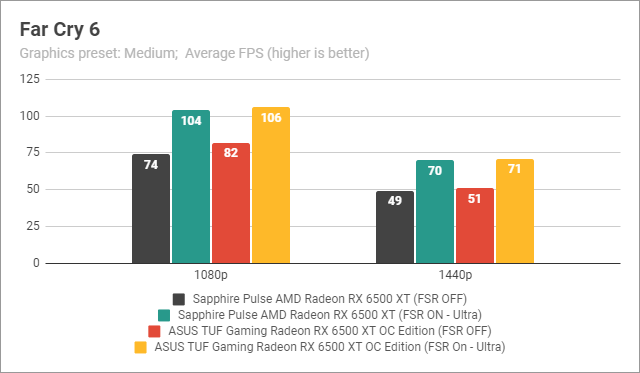
Benchmark results in Far Cry 6
In Horizon Zero Dawn, a beautiful game but also one that requires a powerful gaming machine to run well, we saw similar results. The level of performance of both cards was almost identical. And, again, the AMD FidelityFX Super Resolution (FSR) managed to significantly boost the number of frames per second. In 1080p, the performance on medium visual settings was good either way, but in 1440p resolution, the test computer went above the 60 fps limit only when we enabled AMD FSR. The AMD FidelityFX Super Resolution delivered an fps increase of about 30 percent in 1080p and 20 percent in 1440p.
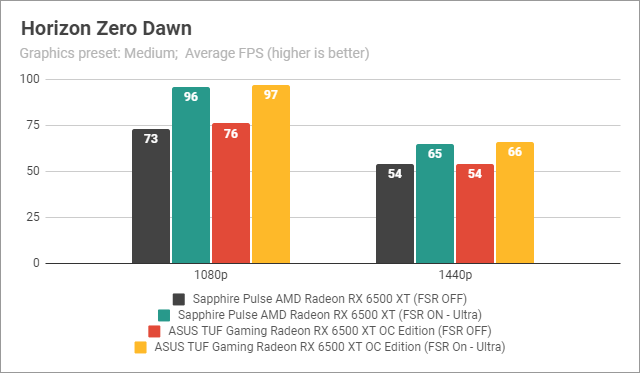
Benchmark results in Horizon Zero Dawn
The third and last game we checked was World War Z, a title that’s optimized for AMD processors and graphics cards. Using Vulkan API and medium graphics quality settings, we got excellent results in both 1080p and 1440p with both cards, although the ASUS TUF Gaming Radeon RX 6500 XT OC Edition outmatched the Sapphire Pulse AMD Radeon RX 6500 XT. Still, it’s worth noting that, on both cards, enabling AMD FidelityFX Super Resolution (FSR) increased the number of frames per second by roughly 34 and 44 percent in 1080p and 1440p respectively.
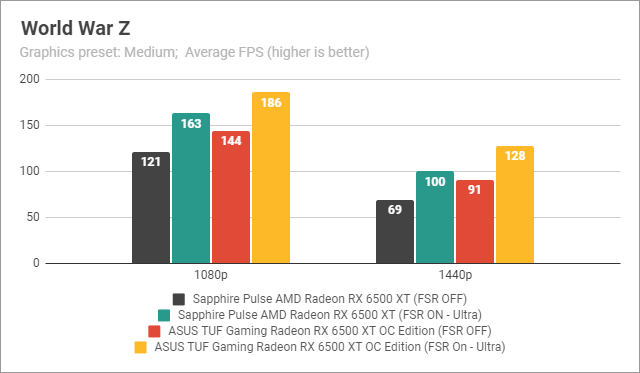
Benchmark results in World War Z
Next, we used 3DMark’s Time Spy, which runs on DirectX 12, and in 2560 x 1440 pixels resolution. With the Sapphire Pulse AMD Radeon RX 6500 XT, we got a score of 5466 points, almost identical to the score of the ASUS TUF Gaming Radeon RX 6500 XT OC Edition. In Port Royale, a benchmark that measures the graphics performance when ray-tracing is involved, both cards had extremely low scores (440 vs 498 points), which confirm the assumption we made earlier in this review: the AMD Radeon RX 6500 XT GPU has too few ray accelerators. This is not a graphics card that can render ray-tracing effects at decent performance.
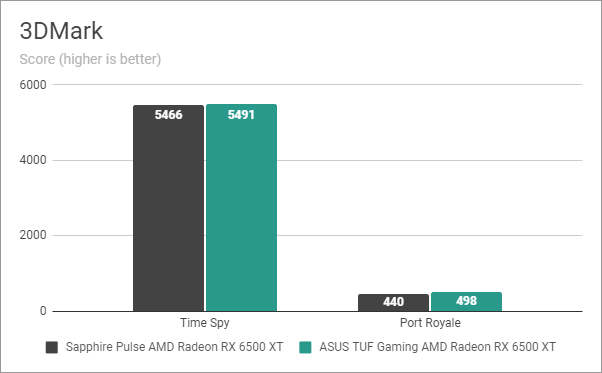
Benchmark results in 3DMark Time Spy and Port Royale
Last but not least, we wanted to see how much electrical power the graphics card needs. According to our measurements, the Sapphire Pulse AMD Radeon RX 6500 XT graphics card draws up to 90 Watts. That’s not much at all, so a 400 power supply unit should suffice for your PC. As for the heat produced, the Sapphire Pulse AMD Radeon RX 6500 XT didn’t get hotter than 61 degrees Celsius (142 degrees Fahrenheit). It’s not a high temperature, although ASUS’ card managed to stay even cooler: 56 degrees Celsius (133 degrees Fahrenheit).
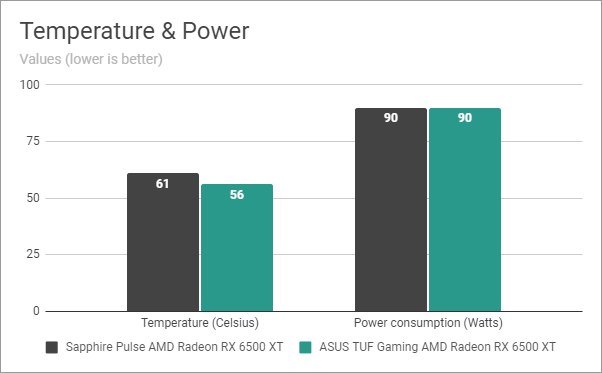
Sapphire Pulse AMD Radeon RX 6500 XT: Temperature and power
After benchmarking the Sapphire Pulse AMD Radeon RX 6500 XT, it looks like this is a good graphics card for those who intend to build an affordable gaming PC. It’s capable of delivering good gaming performance in 1080p resolutions and with medium visual settings, maybe set to high in some less-demanding games. Also, for even better results, we strongly recommend you to enable AMD’s FidelityFX Super Resolution feature in the games that support it.
NOTE: Sapphire products like the graphics card we reviewed, are available in EMEA through the ASBIS Group.
What’s your opinion about the Sapphire Pulse AMD Radeon RX 6500 XT?
Now you know what the Sapphire Pulse AMD Radeon RX 6500 XT graphics card can offer. It delivers decent performance in 1080p gaming and does so at an affordable price. Before we close this review, let us know what you think in the comments section below. Would you buy it?


 15.03.2022
15.03.2022 